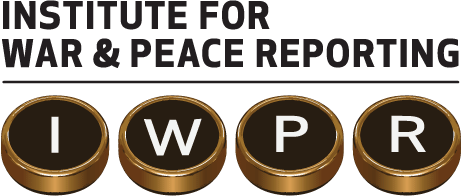Chicken out of Reach for Damascenes

By Salam al-Saadi
(Damascus, Syria) – Abu Nawras faced a difficult decision in June 2013. His chicken farm was not as profitable as it had been before the war, making it difficult to support his wife and four children. After months of losing money, he finally decided to close the farm, move his family to Damascus and open a small shop in the suburb of Dummar al-Balad, where he sold slaughtered chickens.

Adra, approximately 25 kilometres northeast of Damascus, is one of the main industrial centres in the country. Forces loyal to Syrian President Bashar al-Assad control the city, which has not been the site of any battles.
Despite the relative stability in Adra, Abu Nawras says that he had to shut down his chicken farm because the cost of production has risen by over 400 per cent.
“When I would transport my chickens to Damascus, the trucks would be shelled, shot by snipers, and robbed,” he said. “Many birds died. They were also less likely to reproduce because they were terrified by the sounds of bombs and warplanes. We also had to pay exorbitant bribes at each regime checkpoint just to get though.”
According to reports by the Syrian government’s Central Bureau of Statistics, around 75 per cent of chicken farms – over 11,000 in 2011 – are in high conflict areas, like the Damascus countryside, Daraa, Homs, Idlib, Hama. Other farms in more secure areas, like the one previously owned by Abu Nawras, operate under very difficult circumstances. Syria’s general economic collapse, and the devaluation of the Syrian Lira, has caused a huge spike in the price of feed as well as veterinary medication and vaccinations. This, in turn, has driven production costs up significantly, in addition to the losses sustained by farmers who lost chickens during transport.
According to statements made by Syrian economic authorities, approximately 80 per cent of Homs’s chicken farms have stopped production, as have 90 per cent of those in Idlib, 80 per cent of those in Tartous, and 92 per cent in Hama.
Consumption is not faring any better; the Syrian Chamber of Agriculture announced chicken consumption dropped more than 60 per cent in Syria. This seems natural, given the decline in buying power for most Syrians and the prohibitive increase of the price of chicken.
The price of raw chicken doubled between May and September, reaching 600 Syrian Liras (around four dollars) per kilo before the Syrian government’s Directorate for Internal Trade and Consumer Protection in Damascus fixed its price at 485 Liras in October.
The Syrian government sets official prices for most consumer goods sold in private shops, but shopkeepers rarely adhere to them.
“In three months, we only ate chicken once,” said Samir, a government employee. He notes disapprovingly that chicken costs almost as much as veal. “Now, the barbequed chicken that we used to get for 600 Liras is like a dream to us, after its price reached 1300 Liras,” he added.
To compensate for the loss of chicken production, the government struck import deals with “friendly nations” – meaning those friendly to the regime. In mid-August, the Ministry of Economy imported frozen chicken from Iran. Syria thus went back to importing after achieving self-sufficiency in the production of raw chicken, according to this official study published in March 2011, the month during which protests against Assad’s government started.
The Ministry of Economy decided to sell frozen chicken exclusively to government-run stores at a competitive price of 400 Liras per kilo, which is around 40 per cent cheaper than market price. The ministry said the goal of this action was to lower market prices, counter the greed of merchants, and to provide chicken at a reasonable price to those with limited incomes.
Rabih, a resident of central Damascus, believes that the government’s decision was a positive step, provided it was implemented properly. But he says the chicken is running out quickly and he hasn’t ben able to purchase any.
“Despite the government decision to limit the points of sale to its own centres, the imported chicken still found its way to chicken shops in Damascus to be sold for 500 Liras – 100 Liras more than the fixed price,” he said.
Rabih’s suspects the chicken was illegally sold to private businesses. His suspicion is shared by many residents of Damascus.
A Damascus Bureau correspondent visited three government stores in Damascus in November, and none had frozen chicken. Employees at the stores told him that they were supposed to receive new amounts of the subsidized chicken soon.
Rabih’s suspects the appearance of frozen chicken in the markets of Damascus only after the announcement of the arrival of the first shipments of Iranian chicken backs up his claim. In addition, some shops carried the chicken even before the government’s warehouses did, despite the fact that the government is the exclusive importer of frozen chicken. Although the Ministry of Economy and Foreign Trade announced at the beginning of October that it had granted an unnamed Syrian businessman a license to import frozen Brazilian chicken, it stated that the imports were to be sold to consumers only through the ministry’s General Establishment for Storing and Marketing.
Hussein Makhlouf, the director of the General Establishment for Storing and Marketing, said in an interview with Al-Iqtissadi magazine in September that nothing would be sold wholesale in the private market.
However, a quick look at the Bab al-Srayjeh Souk in Damascus reveals large amounts of frozen chicken selling at 450-500 Liras. Merchants have contradictory claims about the source of the chicken. Some deny that their frozen chicken is the government-imported Iranian chicken that somehow found its way to their shops, while most say that they get their wares from wholesale merchants and do not know the original source.
Ola, a housewife who lives in Rukneddine district, welcomes the imported chicken and its sale at a “reasonable” price. “I got some frozen chicken only twice from the Rukneddine market. Most times the workers say that they are out of stock, and that their refrigerators cannot accommodate large amounts of chicken.
While the move to import chicken has been welcomed by consumers such as Ola and Rabih, it did not bode well for the poultry production sector.
“More than 85 per cent of chicken farms in Syria are small, raising less than 10,000 birds,” said Mohammad al-Kashto, head of the Federation of Syrian Chambers of Agriculture, to the magazine Al-Iqtisadi.
According to Kashto, most of the owners used to sell their produce to traders who covered the costs of production, but this has stopped due to the deteriorating security and economic situation. In his statement, he said that imports from Iran are not enough to cover demand.
“We called on the government to grant small loans to these chicken farmers so that they can resume their work, but we did not receive any response,” he said. “The problem is that the poultry sector is all interconnected, so a disruption in any part of the production process leads to its complete failure.”
